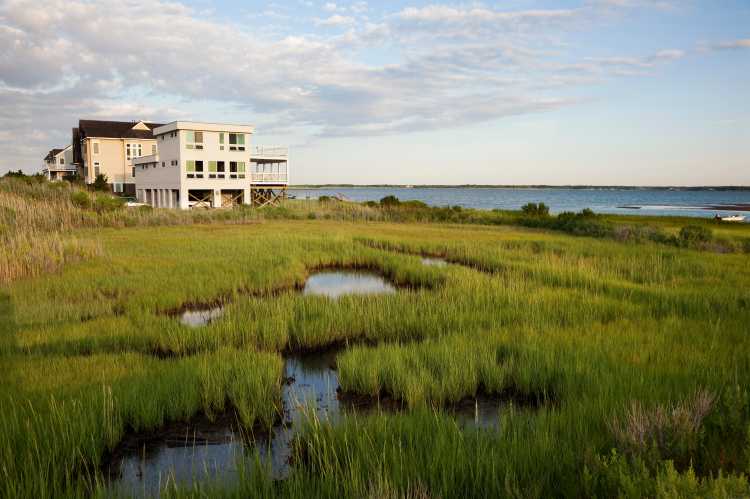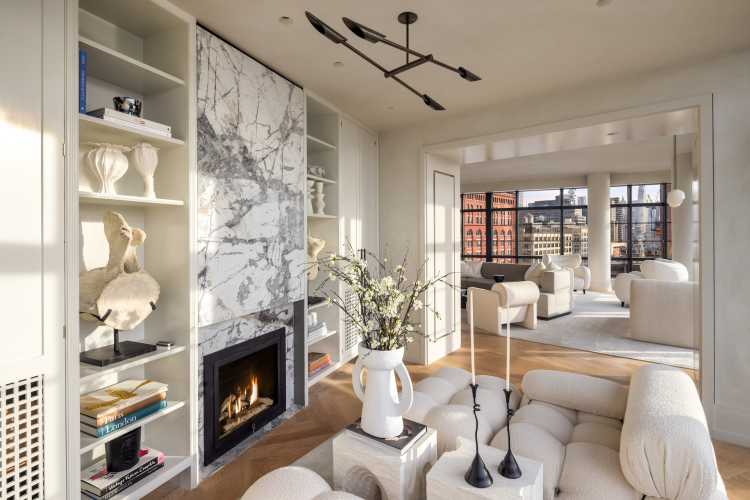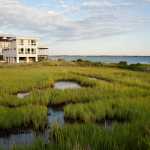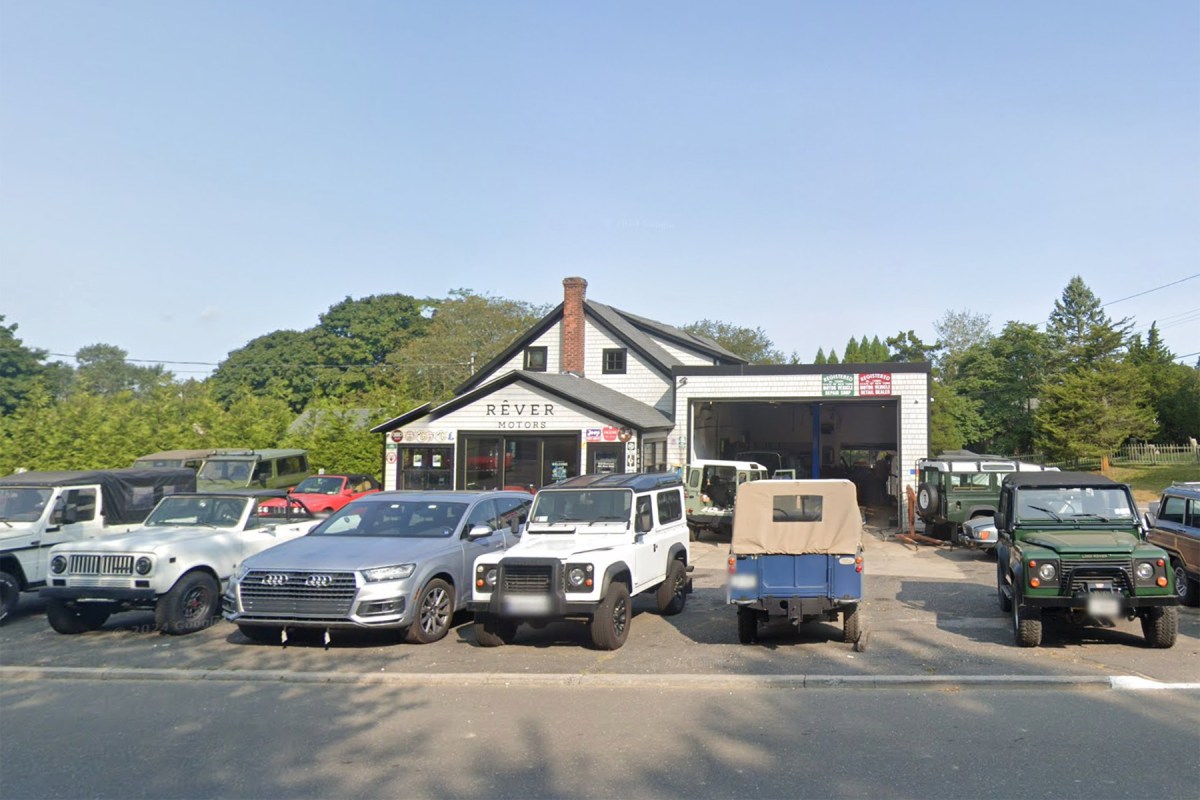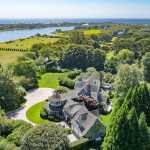A Southampton Village estate, known as Sunnymede, on one of the area’s best known streets recently underwent a multimillion renovation and yet managed to retain its late Victorian style.
“It has the charm of being this old-world house but brand new,” says Douglas Elliman Real Estate’s Michaela Keszler, who shares the listing with Terry Thompson, Paulina Keszler and Robert Rosa. “It’s spectacular.”
The grand home with its two-tiered veranda and wraparound porch harken back to when wealthy families went to their summer cottages to cool down from the ocean breezes.
For $17.495 million, a family could once again enjoy the summer at Sunnymede.
The current owners worked closely with well-known architect John David Rose on the project. Rose’s Southampton-based firm is known for its interest in historic preservation and renovation.
Keszler, who deals mostly with high-end homes, sees a lot of renovations, but few compare to this.
“There was no cost spared and it was done for an owner who loves old houses and wants to put the life back into this one,” she says.
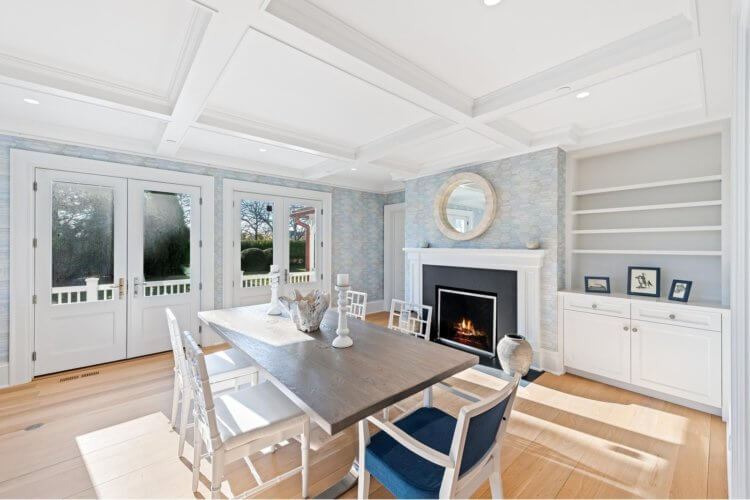
In 1887, the noted architect Robert H. Robertson designed Sunnymede as “a summer cottage” for his in-laws, Dr. Thomas M. and Charlotte Markoe, who had purchased the then-approximately-eight acre parcel, according to the book, The Southampton Cottages of Gin Lane. The Markoe family was one of the oldest and wealthiest families in Quaker Philadelphia, and Dr. Markoe was an accomplished physician and professor of medicine, known throughout New England.
Robertson, by the way, also designed the Hammersmith Farm in Newport, Rhode Island, and the Southampton building that formerly housed the Rogers Memorial Library. These two examples of his work, along with Sunnymede, are all representative of the Gilded Age style.
Situated on a corner lot, Robertson designed the primary gables on Sunnymede to point toward the southwest corner of the house, an asymmetry that is typical of its Queen Anne influence. Sunnymede’s architecture uses its corner location to take advantage of the view and the breezes coming off the nearby water “surely make it as enjoyable a habitat today as it was one hundred years ago,” wrote the Cottages authors.
“The entry porch wraps around the southwest corner of the home and is accented with bracketed columns from chamfered edges native of the Stick style,” they wrote.
The craftsmanship is still intact to this today, even after the home had fallen into disrepair, fumbles were made on previous additions under different ownership and the major renovation that was undertaken a few years ago.
With Rose at the helm, making sure it was in keeping with the home’s historical roots took center stage. Every detail was considered, from moldings to floorboards, in order to keep the old-world charm alive, while also installing top-of-the-line amenities.

Work included the restoration of the existing stained-glass windows, original exterior and interior trim, including the ornamental main stair and fireplace mantels, according to a write-up for an honorary award the project received from AIA Peconic, the East End’s chapter of the American Institute of Architects, in 2018.
“The new addition and the existing home were carefully melded together in a timeless fashion so one cannot readily distinguish the work of 1887 and the new work done in 2017,” the AIA said.
The 6,600-square-foot house was lifted off its original foundation to make way for a poured concrete foundation before it was moved back.
“The building envelope was updated to exceed the current energy conservation requirements,” the group said. “All interiors meet the living standards available for a luxury home of 2018 with Smart Systems, fire sprinklers, security system and mechanical systems. The house achieves this level of quality and comfort, while retaining the characteristic and look of a time gone by.”
Located in Southampton’s estate section, just one block from the ocean beaches and the shops and restaurants, it is “a triple A location,” Keszler says.
Two front entry automated gates open to the stone and blacktop driveway and reveal lush landscaping and specimen trees on a professionally lit one-acre property. An oversized Dutch door on the wraparound porch leads to 9,000 square feet of living space spread out over four floors—three stories plus basement, something that would not be allowed under current codes. There is an ocean view from the top two floors, Keszler notes.
All four floors are accessible by an elevator, offering a convenience not always available in historic summer homes. The living areas are filled with light thanks to many windows and nine-foot ceilings. Six-inch premium white oak flooring with knots are featured throughout the home.
The foyer doors lead into the living room and a formal dining room beyond that.
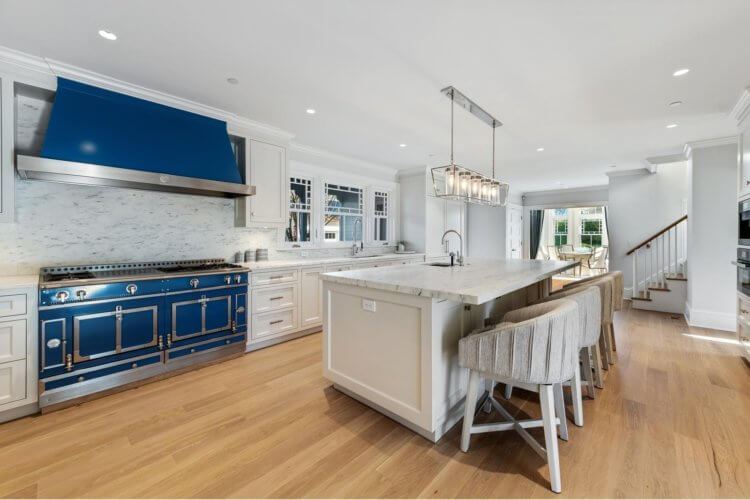
The kitchen is a real showstopper. A blue La Cornue range and matching hood may be the pièce de résistance, but there is plenty else to marvel at between the marble countertops and center island, marble backsplash and the luxurious butler pantry around the corner. But, if cooking al fresco is what you want in the summer, there is also a full outdoor kitchen.
The six-bedroom home has six full bathrooms and two half baths. The second floor houses three bedrooms, including the master suite. And what a suite it is with a western-facing porch, gas fireplace, two water closets, oversized walk-in closet and a private sitting room.
Meanwhile on the second and third floors there are numerous bonus rooms that can be converted into a home office or playroom. Speakers and a Lutron lighting system are integrated throughout the house.
A lower level was added by lifting the house in order to add space for extra amenities. There is a state-of-the-art theater with soundproofing, a projector and five custom-made couches. There is also an oversized wine cellar that has a 30-inch SubZero wine refrigerator and sink, and a gym with a 75-inch television and mirrors. Lastly, there is a full bathroom and a sun-filled bedroom that has a walkout space with French doors.
Out back, you will find a heated 36-foot-by-19-foot gunite pool with a retractable pool cover and a 520-square-foot pool house with a wood-burning fireplace, mini kitchen and a full bathroom.
The property also holds a separate two-car garage, where there are solar panels installed on the roof.
While the current owner declined to be interviewed, it is clear they deserve kudos for good stewardship.
“The house unifies and respects the history of ‘time and place’ of the original work,” AIA Peconic said. “It also has its place in the present, with the incorporation of current building technology. This historic home will remain part of the community’s historic heritage for many future generations.”
This article appeared in the April 2021 issue of Behind The Hedges.


